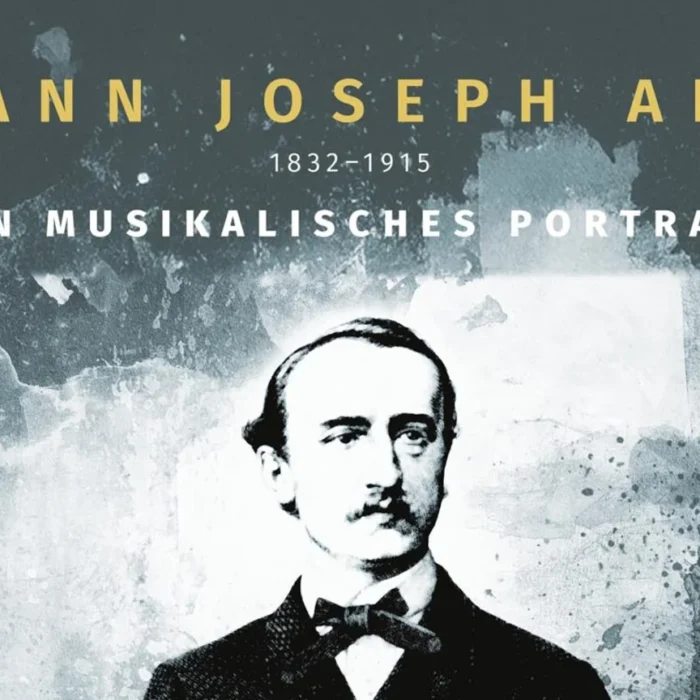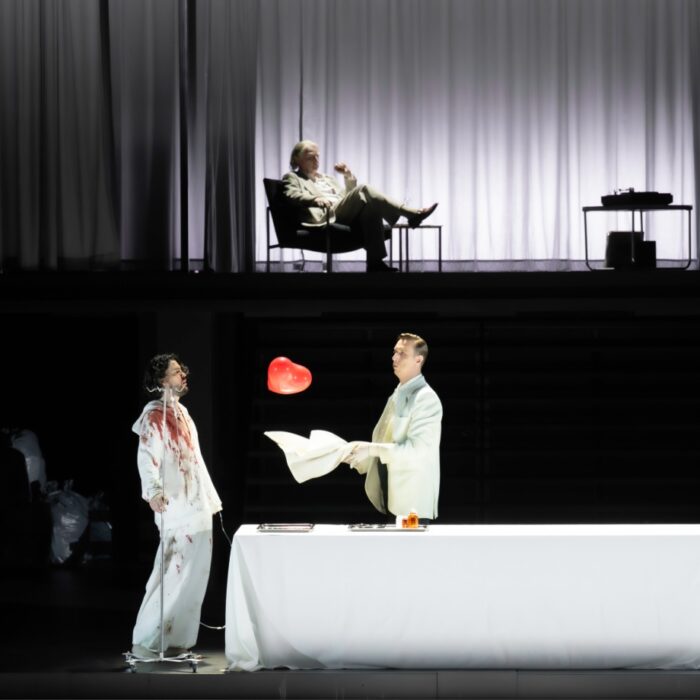
Seattle Opera 2022-23 Review: Tristan und Isolde
Mary Elizabeth Williams Shines in Wagner’s Masterpiece
By Gavin Borchert(Credit: Sunny Martini)
From the second bar of Richard Wagner’s “Tristan und Isolde,” in the hands of conductor Jordan De Souza, it was clear Seattle Opera’s production (which opened Saturday night and runs through Oct. 29) would be sonically something special.
It turned out to be special in several ways, in fact. In that second bar, the famous “Tristan chord”—which opened a new harmonic world for music-lovers at the opera’s 1865 premiere, and which Wagner carefully orchestrated for maximum bite, with double reeds high in the mix—didn’t sting, it bloomed; and the entire Prelude unfolded, at De Souza’s expansive tempo, in curvaceous, soft-edged lines, languid, even erotic.
This sensuality of course presages where the plot is going; it peaked in the Act two love duet, which, even more than the Prelude, was a dream of orchestral and vocal beauty. (And frankly, Wagner’s plot needs all the help it can get from the pit and the podium, if the device of the love potion taken by the title couple, the most contrived theatrical device there is, is going to convince.) It helps that the Seattle Symphony, which plays for Seattle Opera productions, has nearly a half-century of intimate experience with Wagner, dating back to the company’s first Ring in 1975 and up through the 26-season tenure of music director Gerard Schwarz, of whom Wagner was a favorite.
Not only did the orchestra sound fantastic in this scene, they blended and balanced impressively with the three voices involved: Stefan Vinke as Tristan; Mary Elizabeth Williams, singing her first Isolde; and Amber Wagner as Isolde’s attendant Brangäne, who injects warning asides. The very apex of the whole evening’s sonic rapture (I hope Vinke and Williams don’t mind me saying so) was Amber Wagner’s interlude in the duet, her pure, gleaming mezzo-soprano a silvery sonic analogue to the background starlight provided by set and video designer Diego Siliano.
A Rich Portrayal
Williams is a longtime favorite at Seattle Opera; her past roles here include Donna Elvira in “Don Giovanni” (as part of SO’s Young Artists Program), Serena in “Porgy and Bess,” and Abigaille in “Nabucco,” but this is her first Wagner role here. The wide—indeed, fresh and daring—range of temperament and personality she brought to Isolde was fascinating and engaging: queenly imperiousness, sure, but also, at the other end of the spectrum, a touch of wit, playfulness, even coquettishness (as she opened Act two bantering with Brangäne, she’d seemingly morphed during intermission into a Rossini ingenue).
This wide personality range is evident even in the opera’s closing “Liebestod,” one of the ultimate tests for any soprano. To start the aria, Williams took a cue from the conversational mode of Wagner’s own libretto, with its plain repeated refrain of “Do you see?” She addressed the rest of the cast (who here fade away as if she’s gradually moving into the realm of imagination), delivering each brief line in a simple, declarative, dialogue-like manner that was startlingly moving. This also gave her somewhere to build from emotionally—increasing in intensity, as the phrases lengthened, from this matter-of-fact-ness to the transcendence of Wagner’s climax.
Meanwhile, Vinke (Siegfried in Seattle Opera’s most recent Ring, in 2013) and his rich, mellow tenor, sounded best in his most taxing music, the long monologue in Act three, which allowed him to fully let loose.
Solid Support
Also in the cast: Ryan McKinney’s warm blanket of a baritone—comfort in sound—is ideal for Tristan’s stalwart sidekick Kurwenal, who reunites the lovers in Act three and defends Tristan at the cost of his own life (What thanks does he get? To end up in Brittany killed by spears.).
Morris Robinson was similarly tellingly cast as King Marke, for whom Isolde was intended before she took that potion; he’s okay with it, though, as the gravitas of his voice and stage presence reassure us.
Andrew Stenson is double-cast as the Sailor and the Shepherd, Joshua Jeremiah sings the Steersman, and Viktor Antipenko plays the treacherous Melot, all admirably.
Siliano’s set relies heavily on projections, onto both the scrim in front of the action (which is never lifted, and which visually clutters up some scenes) and the screen at the rear. The projections move effectively between quasi-representationalism—a ship in Act one, a castle in Act two, and a storybook-diorama version of a stony grotto for Act three —and abstraction, as in the starry sky and breeze-driven clouds during the love duet. Video footage of an actual rocky coast and crashing waves add metaphorical drama to moments of passion.
Among Luciana Gutman’s costumes, the glamorous standout is Isolde’s violet gown and spangled cloak, which she employs as Tristan’s death pall—a treacherous choice, because the slightest motion under sparkly sequins is visible to the back of the theater, but Vinke plays dead like a pro.
And lastly it needs to be noted that Seattle Opera uses a full orchestra for this production, after a few that, for budgetary or COVID reasons or both, had to use a reduced orchestration.


